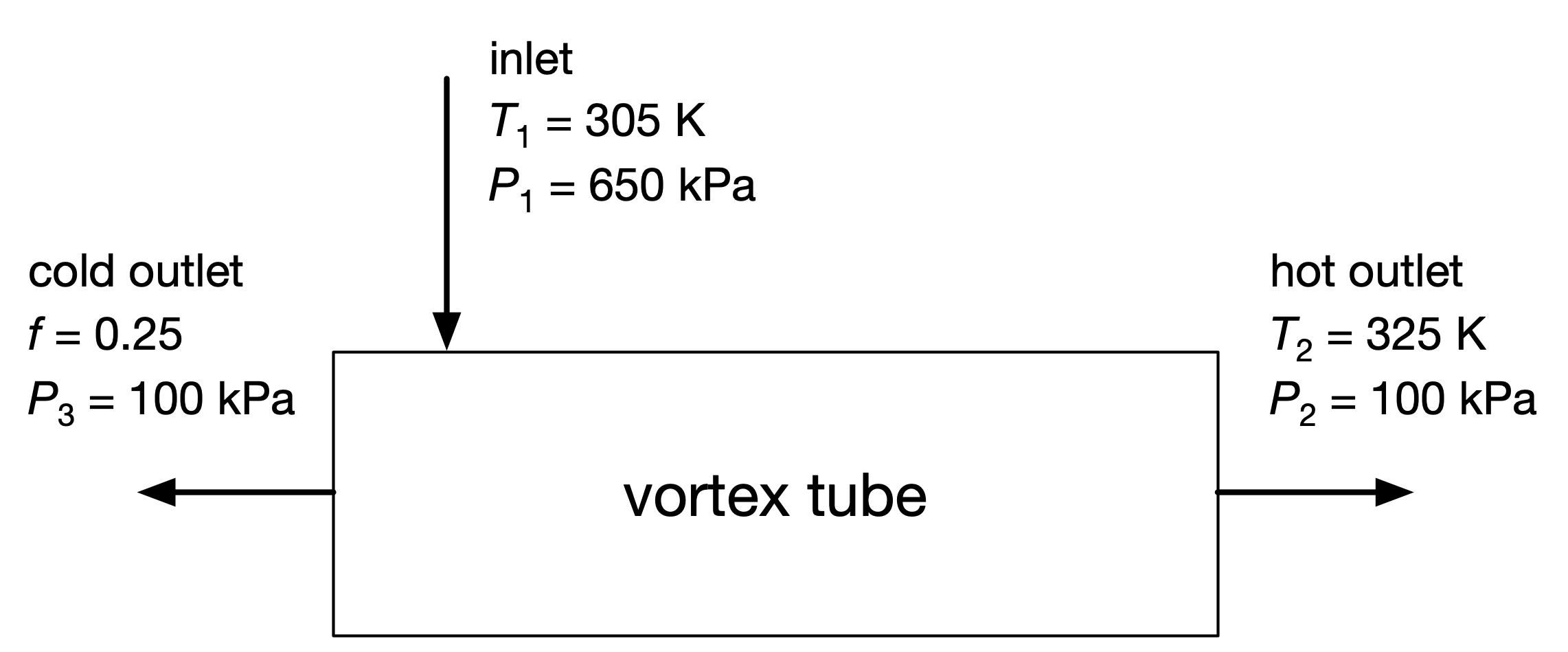Vortex tube
Vortex tube#
A vortex tube takes in high-pressure air at 650 kPa and 305 K, and splits it into two streams at a lower pressure, 100 kPa: one at a higher temperature of 325 K and one at a lower temperature. The fraction of mass entering that leaves at the cold outlet is \(f = 0.25\). The vortex tube operates continuously at steady state, is adiabatic, and performs/experiences no work. Air should be modeled as an ideal gas with constant specific heat: \(R = 287\) J/kg⋅K and \(c_p = 1004\) J/kg⋅K.

Problem: Determine the temperature at the cold end. Then, determine whether this device is physically possible.
# Enter the known quantities
import numpy as np
from pint import UnitRegistry
ureg = UnitRegistry()
Q_ = ureg.Quantity
gas_constant = Q_(287, 'J/(kg K)')
cp = Q_(1004, 'J/(kg K)')
temp_1 = Q_(305, 'K')
pres_1 = Q_(650, 'kPa')
temp_2 = Q_(325, 'K')
pres_2 = Q_(100, 'kPa')
f = 0.25
pres_3 = Q_(100, 'kPa')
First, we can find the temperature at the cold outlet by performing an energy balance on the device:
temp_3 = (temp_1 - (1-f)*temp_2) / f
print(f'Temperature at cold outlet: {temp_3: .2f}')
Temperature at cold outlet: 245.00 kelvin
Now, examine whether the device is physically possible by performing an entropy balance:
We can obtain the \(\Delta s\) values by using the relationship for an ideal gas with constant specific heat:
delta_s_12 = (
cp * np.log(temp_2/temp_1) -
gas_constant * np.log(pres_2/pres_1)
)
delta_s_23 = (
cp * np.log(temp_3/temp_2) -
gas_constant * np.log(pres_3/pres_2)
)
entropy_gen = f * delta_s_23 + delta_s_12
print(f'Entropy generation rate: {entropy_gen: .2f}')
Entropy generation rate: 530.05 joule / kelvin / kilogram
Since the rate of entropy generation is positive, this device can operate as described.

